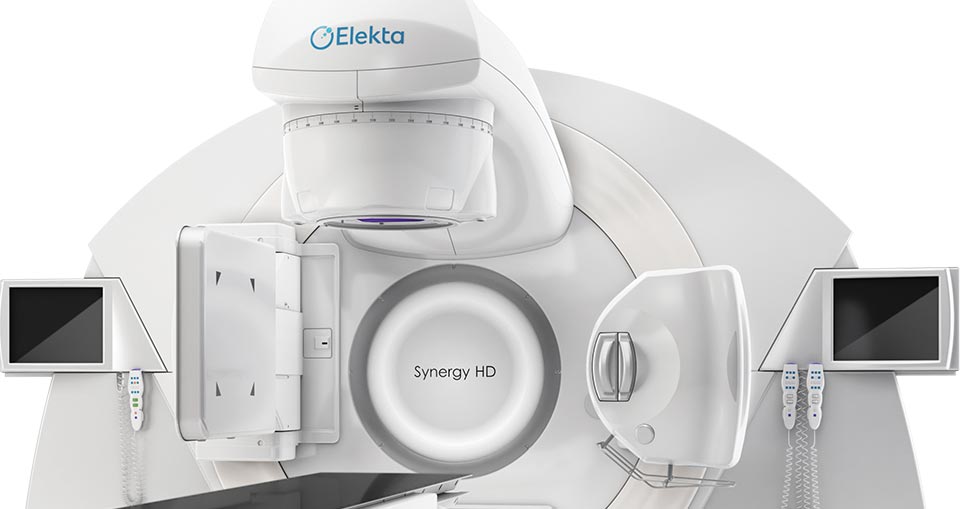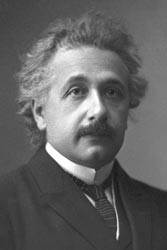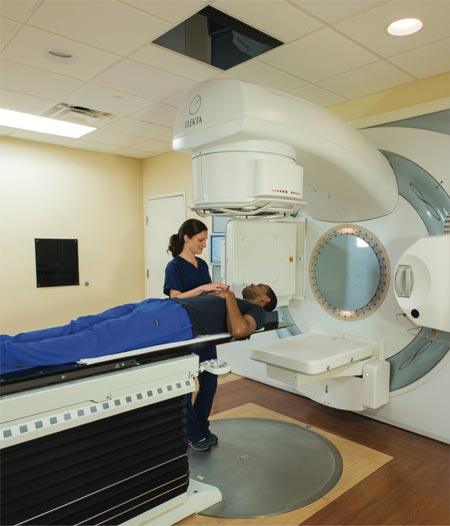VMAT, IGRT AND IMRT

VMAT: Volumetric Modulated Arc Therapy
The Newest And Most Precise Form Of Radiation Treatment
VMAT is the most advanced form of IMRT and IGRT. There have been several recent major technological advances allowing SUCCESS RATES that typically exceed those of surgery and proton beam therapy, with far fewer side effects. Unlike seed implantation, which is an invasive procedure and requires anesthesia to be administered in the hospital, VMAT is entirely non-invasive and done as an outpatient in our modern office.
Volumetric Modulated Arc Therapy (VMAT) is the newest and most precise form of radiation therapy available. This state-of-the-art technology allows our team to deliver more tightly focused radiation treatments to your cancer than ever before. Our VMAT technology also greatly reduces treatment time from the typical 20-30 minutes seen with proton beam therapy or conventional radiation treatment, to only 1-2 minutes. In VMAT, as the linear accelerator rotates around you, radiation beams sweep in continuous uninterrupted arcs, tightly pin-pointed on the cancer. 3-dimensional CT imaging technology is incorporated into our actual treatment machine. This aids in the precision of the radiation, giving the doctor the ability to see the tumor at the time of treatment. This new technology allows the radiation oncologist more control to deliver a carefully targeted dose, so that only the tumor receives a high dose of radiation, not the surrounding healthy organs.
Our VMAT technique combines volumetric modulated arc therapy with both the latest advances in both intensity modulated radiation therapy (IMRT) and Image Guided Radiation Therapy (IGRT). With IMRT, sophisticated computers modulate the intensity of the radiation beam, increasing it to areas where cancer cells are, and decreasing it to areas that need to be protected. This allows for maximum radiation to be delivered to the prostate and areas potentially harboring cancer cells while minimizing radiation to the surrounding bladder and rectum. Patients with more intermediate to advanced-stage prostate cancer have a high risk of having cancer outside the prostate, beyond a surgeon’s reach.
ASK THE DOCTOR
CLICK HERE
TREATMENT HOURS
Mon: 6:30am – 5:30pm
Tues: 6:30am – 5:30pm
Wed: 6:30am – 5:30pm
Thurs: 6:30am – 5:30pm
Fri: 6:30am – 5:30pm
Sat: CLOSED
Sun: CLOSED
PAGE: Print | PDF | Email
VMAT offers faster treatment times and more effectively treats the cancer, not the surrounding healthy organs.
At our Center for Prostate Care, we are able to use 2 simultaneous methods of IGRT to allow for the most precise treatment available. Both cone-beam CT scan and tracking of implanted gold fiducial markers are utilized for each daily treatment, allowing acquisition of a 3-dimensional image of the prostate and surrounding anatomy. Computers detect any slight change in position of the prostate that may result from movement or variations in the bladder or rectal filling. The computer then makes 3-dimensional corrections to precisely target the treatment to the prostate’s exact position that day. Changes as small as 1 millimeter are made to provide the greatest precision available.
This full 3d image guidance is NOT possible with proton therapy.
We are one of the only centers in the world using MRI treatment planning for prostate cancer. By utilizing a customized MRI scan, we can obtain the most accurate definition of important anatomy, such as the prostate, bladder, rectum, and nerves that control erections. The information is entered into our computers and a customized treatment plan is created, tailored to fit each person’s anatomy precisely. It further helps ensure that no known areas of cancer are missed and allows for greater sparing of uninvolved areas from radiation. VMAT is typically given for only 1-2 minutes a day, five days a week. VMAT is painless and non-invasive. The most commonly reported side effects are mild fatigue and urinary irritation. You will NOT develop any nausea, abdominal pain, hair loss, or skin burning. You will not have incontinence (i.e. not lose your ability to control your bowels or bladder). You will be able to continue working full-time and should enjoy your regular activities during treatment.
Why is VMAT treatment so much better than Protons?
-
- More sophisticated 3-d volumetric image guidance, instead of using only planar x-ray images as in proton therapy.
- Less rectal toxicity/side effects with treatment
- Improved dose conformality
- Smaller volume of normal tissue around the prostate treated to high doses
- Less uncertainty in dose deposition
- Less neutron contamination
- Superior clinical results
- Faster treatment time
- More conformal high dose radiation region to better spare radiation sensitive normal tissues surrounding the prostate
HIGH DOSE EXTERNAL RADIATION OUTCOMES1
Description: Sucess Rates
1 Viani GA et al. IJROBP 2009. Aug 1; 74(5):1405-18
Terk Oncology’s team is among the most experienced in the world utilizing the newest technologies such as VMAT for the treatment of cancer.
IMRT
External radiation delivered from a high-energy X-ray machine called a linear accelerator has been effectively used to treat prostate cancer for more than 30 years. In recent years, there have been several major technological advances allowing SUCCESS RATES that typically exceed those of surgery and proton beam therapy, with far fewer side effects.
1

X-ray film exposed using IMRT radiation therapy
Demonstrats the precision with which radiation dose can be delivered
1 MLA style: Albert Einstein – Facts. NobelPrize.org. Nobel Prize Outreach AB 2022. Sun. 6 Mar 2022. https://www.nobelprize.org/prizes/physics/1921/einstein/facts/
With intensity modulated radiation therapy (IMRT), sophisticated computers modulate the intensity of the radiation beam, increasing it to areas where cancer cells reside and decreasing it to areas that need to be protected. This allows for maximum radiation to be delivered to the prostate and areas potentially harboring cancer cells while minimizing radiation to the bladder and rectum. Patients with intermediate to advanced-stage prostate cancer have a high risk of having cancer outside the prostate, beyond the surgeon’s reach. Unlike surgery, IMRT can treat this area.
IGRT
Image Guided Radiation Therapy (IGRT) takes IMRT one step further. Various imaging technologies such as Cone-beam ® CT scan and tracking of implanted gold fiducial markers are utilized before each daily treatment, to acquire a 3-dimensional image of the prostate and surrounding anatomy. Computers detect any slight change in position of the prostate gland that may result from movement or variations in filling of the bladder or rectum. Using this information, the computer adjusts the radiation beam accordingly in order to precisely target the treatment to the prostate’s exact position that day. Changes as small as 1 millimeter are made to provide the greatest precision available. IGRT is the newest and most advanced system for the delivery of radiation, allowing much greater precision than proton therapy.
We are one of the only centers in the world doing MRI treatment planning for prostate cancer. Prior to beginning IGRT treatment, our patients undergo this special MRI scan and a CT scan in our department. The information from the 2 scans in entered into our specialized computers and a customized treatment plan is created, tailored to fit each patient’s anatomy precisely. IGRT is typically given for only a few minutes a day, five days a week. When combined with a seed implant, this part of the treatment is approximately 5 weeks long. If given without a seed implant, the treatment is typically for 8 1/2 weeks.

IGRT is completely painless and non-invasive. The most commonly reported side effects during treatment are slight fatigue and having to go to the bathroom more frequently. You will NOT develop any nausea, abdominal pain, hair loss, or skin burning. You will NOT lose your ability to control your bowels or bladder. You will be able to continue working full-time and should enjoy all of your regular activities.
Why is IMRT / IGRT Better Than Protons
-
- Increased dose conformality with IMRT vs. Protons
- Smaller volume of normal tissue around the prostate treated to high doses
- Less uncertainty in dose deposition
- Lower volumes of normal tissue treated to high doses
- More sophisticated image guidance with 3D volumetric instead of planar images
- Potential rectal sparing due to the air in the rectal balloon
- Superior clinical results
HIGH DOSE RADIATION OUTCOMES2
LOW RISK: T1c-T2a, Gleason ≤6, and PSA <10
INTERMEDIATE RISK: T2b or Gleason 7 or PSA 10-20
HIGH RISK: T2c-T3, Gleason 8-10, or PSA ≥20
2Viani et al IJROBP 2009
EXPERT & EXPERIENCED: TALK TO A BREAST CANCER TREATMENT EXPERT
Get a second opinion on your breast cancer treatment options from Florida Center for Breast Conservation, your breast cancer treatment experts.